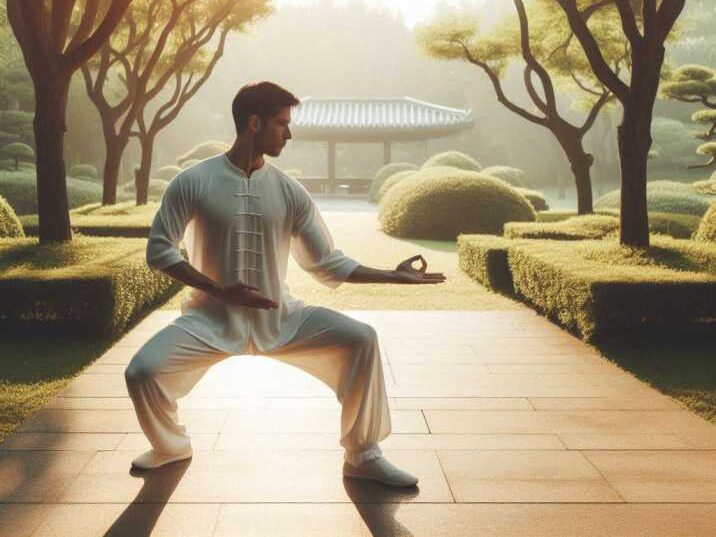Introduction
Table of Contents
Martial arts provide self-defense skills, physical fitness, and mental discipline. While traditional training requires instructors, some martial arts are easier to learn on your own. If you want to develop self-defense techniques, improve focus, and stay active, learning beginner-friendly martial arts at home is a great option.
In this article, we will explore the easiest martial arts to learn on your own, how to practice effectively, and what makes these styles ideal for self-training.

Factors That Make a Martial Art Easy to Learn
Not all martial arts are beginner-friendly. Some require extensive partner drills or specialized equipment. The easiest martial arts for self-learning share these characteristics:
- .Simple Movements: Martial arts with simple movements focus on basic, easy-to-learn techniques that don’t require mastering intricate patterns. These arts allow beginners to quickly grasp essential skills without feeling overwhelmed by complex sequences.
- Minimal Equipment: Martial arts that require little to no specialized gear make them easier to start. Practicing with just your body or a simple tool, like a bag or rope, eliminates the need for expensive equipment or a partner, lowering barriers for self-learners.
- Effective for Self-Defense: Martial arts that emphasize practical techniques, such as strikes or escapes, prepare individuals for real-world situations. These arts teach effective self-defense moves that don’t rely on fancy footwork or complex drills, making them easy to apply when needed.
- Adaptable for Solo Drills: Arts that can be practiced alone, like shadow boxing or solo forms, are ideal for self-learners. These drills don’t require a partner, allowing individuals to train and improve at their own pace without relying on others for practice.
7 Easiest Martial Arts to Learn on Your Own
1. Shadow Boxing (Boxing Basics)
Why It’s Easy: Shadow boxing involves basic punches—jab, cross, hook, and uppercut—that are straightforward and easy to learn. It requires no special equipment, just your body and space. This form of training is excellent for improving speed, coordination, and endurance, as you practice throwing punches while focusing on technique and form.
How to Train: To train, start by practicing in front of a mirror to check your form and improve technique. You can follow video tutorials to learn boxing basics and progress through different drills. If you have access to a punching bag or focus mitts, use them to enhance your training by adding resistance and improving targeting.
2. Muay Thai (Basic Striking Techniques)
Why It’s Easy: Muay Thai is built around striking with fists, elbows, knees, and kicks—simple yet effective movements. The techniques can be practiced solo, making it easier for beginners to get started without needing a training partner. It’s not only great for building strength and fitness, but it also teaches practical self-defense skills.
How to Train: Begin by learning the basic stances and strikes, such as the jab, cross, and roundhouse kick. Practice knee and elbow drills on a heavy bag to develop power and precision. For conditioning, incorporate jump rope exercises and shadowboxing to build stamina and reinforce the skills you’ve learned.
3. Tai Chi (Gentle and Meditative)
Why It’s Easy: Tai Chi is known for its slow, flowing movements that are simple to learn and very gentle on the body. It’s great for improving balance, coordination, and overall flexibility. With no partner or equipment needed, it’s an ideal martial art for self-practice and relaxation.
How to Train: To start, follow guided Tai Chi routines available on YouTube to learn the movements and sequence. Practicing daily will help increase flexibility and reduce stress. Focus on controlled breathing and mindfulness while performing each movement to deepen the practice and promote relaxation.

4. Karate (Basic Katas and Strikes)
Why It’s Easy: Karate’s focus on basic stances, punches, and kicks makes it simple for beginners to learn. Katas (specific patterns of movements) can be practiced alone, making it easy to train without a partner. Practicing Karate also builds discipline, confidence, and self-awareness.
How to Train: Begin by mastering basic blocks, punches, and kicks. Once you’re comfortable with the basics, start learning beginner-level katas through online tutorials or instructional videos. Consistent practice of stances and movements will help build muscle memory and improve your overall technique.
5. Jiu-Jitsu (Solo Drills for Ground Fighting)
Why It’s Easy: Jiu-Jitsu focuses on body control and positioning, which are key for mastering ground fighting techniques. There are plenty of solo drills, such as shrimping or bridging, which can be practiced without a partner. This martial art also enhances flexibility, core strength, and spatial awareness.
How to Train: Practice fundamental solo drills like shrimping, bridging, and technical stand-ups to improve your ground game. Use grappling dummies or cushions to simulate live sparring. Focus on learning basic escapes and transitions to build a solid foundation in Jiu-Jitsu.
6. Taekwondo (Kicking Techniques)
Why It’s Easy: Taekwondo’s primary focus on kicking makes it an easy martial art to start, especially for those interested in developing strong legs and powerful kicks. It also improves flexibility and coordination. Many of the techniques can be practiced using a kicking bag or target pads, making solo training accessible.
How to Train: Work on basic kicks, such as front kicks, roundhouse kicks, and side kicks, starting slow to build technique and form. Use a target pad or wall to practice precision and improve accuracy. Consistent stretching will help improve flexibility and increase the effectiveness of your kicks.
7. Krav Maga (Self-Defense Techniques)
Why It’s Easy: Krav Maga focuses on practical, instinctive movements designed for real-life situations. It doesn’t require complicated techniques and is known for its focus on self-defense and survival. With minimal equipment needed, Krav Maga is very accessible for solo training and quick learning.
How to Train: Practice basic striking drills, including punches, elbows, and knees, and defensive moves like blocking and escaping holds. Use household objects (e.g., chairs or bags) to simulate attacks and practice real-life scenarios. You can also incorporate resistance bands for strength training to enhance your Krav Maga skills.
Table of Easiest Martial Arts to Learn on Your Own
| Martial Art | Focus | Best For |
|---|---|---|
| Boxing | Punching, footwork | Cardio, coordination |
| Muay Thai | Striking | Self-defense, conditioning |
| Tai Chi | Slow movements | Flexibility, mindfulness |
| Karate | Strikes, katas | Discipline, technique |
| Jiu-Jitsu | Ground defense | Strength, positioning |
| Taekwondo | Kicking | Agility, leg strength |
| Krav Maga | Self-defense | Practical protection |
Conclusion
Learning martial arts at home is possible with the right approach. Boxing, Karate, Muay Thai, and Krav Maga are some of the easiest martial arts to practice solo. These styles help improve fitness, self-defense skills, and mental discipline. While professional training is beneficial, self-learning provides a great foundation for martial arts enthusiasts.
FAQs
1. Can you learn martial arts at home without a trainer?
Yes, you can learn basic techniques through online tutorials and self-practice, but professional training is recommended for mastery.
2. What is the best martial art for beginners?
Boxing, Karate, and Tai Chi are great options due to their simple movements and easy solo training.
3. How long does it take to learn martial arts on your own?
Basic techniques can be learned in a few months, but mastery takes years of consistent practice.
4. Is martial arts training at home effective?
Yes, solo training improves fitness, coordination, and self-defense skills, but sparring is needed for full effectiveness.
5. Do I need equipment for learning martial arts at home?
Not always. Some styles like Tai Chi need no equipment, while others benefit from a punching bag or training dummy.

